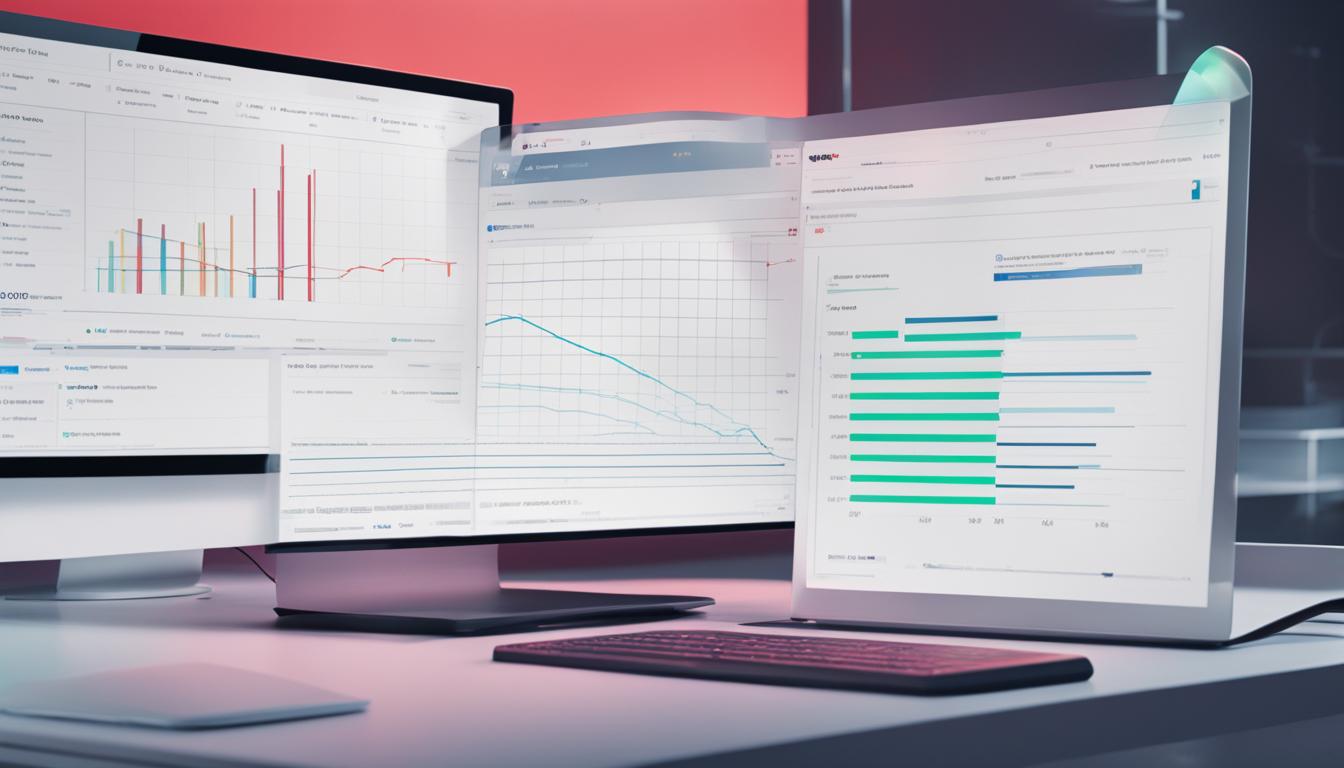Looking to boost your business acumen and advance your SEO optimization efforts? Look no further! This guide serves as your all-in-one reference for excelling in entity analytics and tracking featured snippet acquisition. By examining user interactions, enhancing the user experience, and leveraging data insights, you will enhance your product’s performance, increase organic traffic, and raise your search engine rankings. Let’s dive in!
Key Takeaways:
- Entity analytics is crucial for enhancing business insights and SEO optimization.
- Tracking featured snippet acquisition can help increase organic traffic and improve search engine rankings.
- By analyzing user behavior and optimizing the user experience, you can identify opportunities for improvement.
- Metrics such as product usage, customer satisfaction, and customer journey analysis provide valuable insights for optimizing products and marketing efforts.
- Trends analysis, journey analysis, attribution analysis, cohort analysis, retention analysis, churn analysis, funnel analysis, conversion analysis, and milestone analysis are all important aspects of entity analytics.
Understanding Entity Analytics
Entity analytics plays a crucial role in gaining insights into how users interact with a product or service. By analyzing quantitative data, businesses can measure user engagement, identify trends, and make data-driven decisions. In particular, product analysis is an integral part of entity analytics, as it provides a deeper understanding of the various aspects of a product, such as its components, functions, technology, costs, and demands.
Product analytics, on the other hand, focuses on gathering insights into user behavior and preferences. This involves analyzing frequently accessed features, average time spent on specific actions, and mapping the user journey. By harnessing the power of entity analytics, businesses can optimize the user experience, align product features with customer needs, and drive continuous improvement.
“Entity analytics helps us uncover valuable insights about our product and its users. By analyzing data related to user behavior and preferences, we can make informed decisions that enhance the user experience and drive better business outcomes.”
In summary, entity analytics, specifically product analysis and product analytics, provide businesses with the tools to understand user behavior, optimize their products, and deliver a personalized user experience. By leveraging these insights, businesses can improve customer satisfaction, boost engagement, and ultimately drive growth.
Importance of Entity Analytics
Effective entity analytics is essential for product teams in optimizing their offerings and enhancing user experiences. By analyzing user behavior and engagement, product teams can gain valuable insights to make data-driven decisions and improve their products over time. With a focus on product teams, this section explores the importance of entity analytics in driving optimization, enhancing user experience, and leveraging data insights.
Optimizing Product Performance
Entity analytics provides product teams with the necessary insights to optimize their offerings. By analyzing user behavior and engagement metrics, product teams can identify areas of improvement and make informed decisions to enhance the functionality, usability, and performance of their products. This data-driven approach allows teams to iterate and refine their offerings, ultimately leading to improved customer satisfaction and business success.
Enhancing User Experience
Entity analytics plays a crucial role in understanding user challenges and improving the overall user experience. By analyzing user behavior and engagement, product teams can identify pain points, uncover user preferences, and align product features with customer needs. This enables teams to design intuitive user interfaces, streamline user workflows, and create seamless interactions, ultimately enhancing the overall user experience.
Leveraging Data Insights
Entity analytics provides product teams with valuable data insights that can drive their decision-making processes. By analyzing user behavior and engagement, teams can uncover patterns, trends, and preferences that can inform their product roadmap and strategy. These data insights enable teams to make informed decisions about feature prioritization, product enhancements, and marketing strategies, ultimately leading to better customer engagement and business outcomes.
In summary, effective entity analytics is crucial for product teams in optimizing product performance, enhancing user experience, and leveraging valuable data insights. By utilizing entity analytics, teams can make data-driven decisions, improve the usability of their products, and align their offerings with customer needs. This results in enhanced customer satisfaction, increased user engagement, and improved business outcomes. To achieve success in the digital landscape, product teams must prioritize entity analytics as a fundamental aspect of their strategy.
Metrics for Entity Analytics
When it comes to entity analytics, measuring the right metrics is crucial for gaining valuable insights into your business goals, product usage, customer satisfaction, and customer journey. By tracking and analyzing these metrics, you can make data-driven decisions to optimize your products and improve your marketing efforts.
Business Goals
Tracking and analyzing business goals is essential for understanding the overall performance of your company and products. By setting clear goals and aligning your entity analytics with these goals, you can measure your success and identify areas for improvement. Key metrics to consider include revenue growth, market share, customer acquisition, and customer retention.
Product Usage
Measuring product usage metrics provides insights into how customers interact with your product. By tracking metrics such as active users, frequency of use, time spent on specific features, and feature adoption rates, you can identify which aspects of your product are most valuable to customers and optimize your product roadmap accordingly.
Customer Satisfaction
Customer satisfaction is a critical metric for assessing the overall experience customers have with your product. By using surveys, feedback analysis, and Net Promoter Score (NPS), you can gather insights into customer satisfaction levels. This data allows you to identify pain points, improve the user experience, and increase customer loyalty.
Customer Journey
Analyzing the customer journey helps you understand how users interact with your product at different stages of their relationship with your brand. You can track metrics such as customer onboarding, feature adoption, conversion rates, and customer churn. By mapping the customer journey, you can identify opportunities to optimize the user experience, drive conversions, and reduce churn.
By focusing on these metrics in your entity analytics, you can gain valuable insights into your business performance, product usage, customer satisfaction, and customer journey. These insights will help you make informed decisions to optimize your products, improve customer experiences, and drive business growth.

Table: Journey Analysis Metrics Comparison
| Metric | Description | Importance |
|---|---|---|
| Conversion Rate | The percentage of users who complete a desired action | Indicates the effectiveness of the user journey and can help identify areas for improvement |
| Drop-off Rate | The percentage of users who drop off at each step of the journey | Highlights potential bottlenecks or areas of friction in the user experience |
| Time to Conversion | The average time it takes for a user to complete the journey | Provides insights into the efficiency and complexity of the user journey |
| Customer Satisfaction | User feedback and ratings on their overall journey experience | Helps measure the success of the user journey in meeting customer expectations |
By combining comprehensive journey analysis with these key metrics, we can gain a deeper understanding of our users, improve their journey, and deliver exceptional customer experiences. This data-driven approach allows us to remain agile and continuously refine our strategies to meet the evolving needs of our customers.
Attribution Analysis in Entity Analytics

When it comes to understanding user behavior and optimizing conversions, attribution analysis plays a vital role in entity analytics. It helps us identify the user flow and the conversion touchpoints that contribute to successful outcomes. By analyzing the data and tracing back the user flow, we can gain valuable insights into the journey that leads to conversions.
Using attribution analysis, we can determine the specific features or actions that users engage with before converting. This allows us to optimize those features and leverage them to their full potential. Understanding the conversion touchpoints not only helps product managers make data-driven decisions but also enables marketing teams to improve their campaigns and increase conversion rates.
In an attribution analysis, it is crucial to visualize the user flow data in a clear and comprehensive manner. This can be achieved by creating a table that showcases the different conversion touchpoints and their respective contribution to the overall conversion rate. Such visual representation helps us identify the key touchpoints that have the most impact on conversions. It also allows us to compare the effectiveness of different touchpoints and optimize our strategies accordingly.
Table: Conversion Touchpoints and Their Contribution
| Conversion Touchpoint | Contribution to Conversion Rate |
|---|---|
| Feature A | 25% |
| Feature B | 15% |
| Feature C | 10% |
| Feature D | 30% |
| Other Features | 20% |
By analyzing the data presented in the table, we can see that Feature D has the highest contribution to the conversion rate, followed by Feature A. This indicates that these two features are crucial in driving conversions and should be prioritized in our optimization efforts. The analysis also reveals that Feature B and Feature C have a lower impact on conversions, suggesting potential areas for improvement.
Overall, attribution analysis in entity analytics enables us to gain deep insights into the user flow and the conversion touchpoints that lead to successful outcomes. By leveraging these insights, we can optimize our product features, marketing campaigns, and user experience to drive higher conversion rates and achieve business growth.
Cohort Analysis in Entity Analytics
Cohort analysis in entity analytics allows us to gain deeper insights into customer behavior by grouping data into related segments based on shared characteristics. These characteristics can include sign-up date, interaction with a salesperson, or subscription type. By analyzing customer cohorts, we can better understand customer trends, tailor offers to specific segments, and identify patterns that can drive business growth.
One of the key benefits of cohort analysis is the ability to analyze customer behavior across the entire customer lifecycle. By tracking cohorts over time, we can identify how different segments of customers interact with our product or service, and determine which actions lead to desired outcomes. This allows us to personalize marketing efforts, optimize customer retention strategies, and ultimately improve the overall customer experience.
Benefits of Cohort Analysis:
- Identify patterns and trends in customer behavior
- Optimize marketing efforts based on specific cohorts
- Personalize customer experiences and offers
- Improve customer retention strategies
For example, let’s say we have a subscription-based business. By analyzing cohorts based on sign-up date, we can determine if there are any differences in customer behavior between early adopters and more recent customers. This can help us tailor our marketing campaigns to specific cohorts, understand which features or benefits resonate the most with different segments, and identify opportunities for upselling or cross-selling.

By leveraging cohort analysis, we can gain valuable insights into customer behavior, identify actionable trends, and make data-driven decisions to improve our business strategies. Cohort analysis plays a vital role in understanding customer segments, optimizing marketing efforts, and enhancing overall customer satisfaction.
Retention Analysis in Entity Analytics
Retention analysis is a crucial aspect of entity analytics that focuses on understanding customer behavior over time. It involves measuring user engagement, comparing metrics across different time periods, and analyzing feature adoption. By conducting retention analysis, businesses can identify customer churn, develop effective retention strategies, and improve customer lifetime value.
One of the key factors in retention analysis is user engagement. By tracking how users interact with a product or service, businesses can understand their level of involvement and satisfaction. This includes measuring the frequency of user visits, the duration of their sessions, and the actions they take within the product. By monitoring user engagement, businesses can identify patterns and trends that may impact retention rates and make data-driven decisions to optimize user experiences.
Another important aspect of retention analysis is feature adoption. By analyzing how users engage with specific features or functionalities, businesses can identify the ones that are most valuable and impactful. This helps inform product development and enhancement strategies, allowing businesses to focus on improving the features that drive user satisfaction and retention. By prioritizing feature adoption, businesses can ensure that their product meets the evolving needs and expectations of their customers.
Retention Analysis Table
| Retention Metrics | Calculation | Interpretation |
|---|---|---|
| Churn Rate | (Number of customers lost / Total number of customers) * 100 | Percentage of customers who stopped using the product or service |
| Retention Rate | (1 – Churn Rate) * 100 | Percentage of customers who continue to use the product or service |
| User Engagement | Frequency of visits, duration of sessions, actions taken | Measure of user involvement and satisfaction |
| Feature Adoption | Number of users who actively use specific features | Identification of valuable and impactful features |
Retention analysis in entity analytics provides businesses with valuable insights into user behavior and helps them make informed decisions to improve customer retention rates. By monitoring user engagement, analyzing feature adoption, and leveraging retention metrics, businesses can optimize their products and services to meet the needs of their customers, drive customer loyalty, and achieve sustainable growth.
Churn Analysis in Entity Analytics
Churn analysis is a crucial aspect of entity analytics that helps businesses understand customer retention trends and make data-driven decisions to reduce churn rates. By analyzing customer behavior over time and monitoring churn on a monthly basis, businesses can identify areas of improvement and refine their product offerings. Churn analysis allows us to determine the number of customers sticking with our product and those who are abandoning it, providing valuable insights into customer trends and preferences.
Customer retention is key to the success and growth of any business. By addressing customer churn through effective churn analysis, we can enhance customer loyalty, reduce customer acquisition costs, and drive long-term revenue. Churn analysis helps us identify the reasons for churn and develop strategies to prevent it. By understanding the customer trends that lead to churn, we can take proactive measures to retain customers and optimize their experience with our product or service.
To conduct churn analysis, we need to collect and analyze relevant data such as customer engagement metrics, usage patterns, and customer feedback. By segmenting customers based on specific characteristics and analyzing their behavior, we can gain insights into the factors that contribute to churn. These insights enable us to take targeted actions to improve customer retention, such as offering personalized promotions, providing exceptional customer support, or enhancing product features based on customer feedback.
| Customer Segment | Churn Rate | Retention Strategy |
|---|---|---|
| Segment A | 10% | Offer personalized discounts and rewards |
| Segment B | 5% | Improve customer support response time |
| Segment C | 15% | Enhance product features based on customer feedback |
In conclusion, churn analysis is a critical component of entity analytics that allows us to understand customer retention, identify churn patterns, and develop effective strategies to reduce churn rates. By leveraging data insights and taking proactive measures, we can enhance customer loyalty, drive growth, and improve overall business performance.
Funnel Analysis in Entity Analytics
Funnel analysis is a powerful technique in entity analytics that helps us understand the user conversion journey and identify areas for improvement. By visualizing and measuring how users progress through a series of steps, we can gain valuable insights into user behavior and optimize the user journey.
One of the key benefits of funnel analysis is its ability to identify bottlenecks in the user journey. By analyzing the drop-off points at each step, we can pinpoint areas where users are more likely to abandon the conversion process. This allows us to prioritize improvements and optimize the user experience, ultimately increasing conversion rates.
Another advantage of funnel analysis is its ability to uncover opportunities for improvement. By comparing the conversion rates at each step, we can identify steps that have a high drop-off rate and may require further optimization. This data-driven approach helps us make informed decisions about which areas of the user journey to focus on and prioritize for improvement.
| Step | No. of Users | Conversion Rate |
|---|---|---|
| Step 1: Registration | 1000 | 80% |
| Step 2: Product Selection | 800 | 60% |
| Step 3: Payment | 480 | 40% |
| Step 4: Confirmation | 240 | 20% |
“Funnel analysis has been instrumental in helping us improve our user conversion rates. By identifying the steps where we were losing the most users, we were able to make targeted optimizations and increase our overall conversion rate by 20%. It’s a powerful technique that any business can benefit from.”
Conversion Analysis in Entity Analytics
In the world of entity analytics, understanding user conversions is crucial for optimizing business success. Conversion analysis allows us to delve deeper into the actions users take on our websites or platforms, helping us better understand their behavior and preferences. By focusing on conversion actions and desired actions, we can gain valuable insights that will guide our marketing strategies and improve overall performance.
When conducting conversion analysis, it is important to identify the specific actions that users take when interacting with our products or services. These actions can vary depending on the nature of our business, but some common examples include signing up for a newsletter, making a purchase, or requesting a demo. By tracking these conversion actions, we can measure the effectiveness of our marketing efforts and identify areas for improvement.
Quote: “Conversion analysis is like a compass that guides us towards understanding what motivates our users to take action. It enables us to optimize our conversion funnels, identify pain points, and create a seamless user experience that encourages desired actions.”
Desired actions are the ultimate goals we want our users to achieve. Whether it’s completing a transaction, subscribing to a service, or downloading a resource, understanding these desired actions is crucial for driving business growth. By analyzing the factors that contribute to desired actions, we can optimize our marketing strategies, enhance user experience, and increase conversion rates.
| Conversion Action | Conversion Rate |
|---|---|
| Newsletter Sign-up | 25% |
| Product Purchase | 10% |
| Demo Request | 15% |
Table: Conversion Rates for Different Actions
Conversion analysis provides us with the necessary insights to make data-driven decisions and optimize our marketing strategies. By understanding the specific conversion actions and desired actions of our users, we can create a personalized and engaging user journey that increases conversion rates and drives business success.
Milestone Analysis in Entity Analytics
When it comes to understanding our customers and optimizing our business strategies, milestone analysis plays a crucial role. By analyzing customer data and identifying significant milestones along their journey, we can gain valuable insights into the actions that drive customers to become high-value customers or may lead to churn. Milestone analysis allows us to replicate successful customer paths and encourage more users to follow the same path, ultimately enhancing customer engagement and driving growth.
One important aspect of milestone analysis is identifying the actions that high-value customers take. These actions can vary depending on the nature of our business and the specific goals we have set. For example, if we run an e-commerce website, high-value customers may be those who make repeat purchases or have a high average order value. By analyzing data from these customers, we can uncover patterns and trends that can guide our efforts in attracting and retaining similar customers.
“Milestone analysis allows us to replicate successful customer paths and encourage more users to follow the same path, ultimately enhancing customer engagement and driving growth.”
Another key component of milestone analysis is understanding the customer path. By mapping out the steps that customers take on their journey, we can identify the touchpoints where they are most likely to engage and convert. This information can help us optimize our marketing strategies, refine our product offerings, and improve the overall customer experience. For example, if we find that a significant number of customers drop off during the checkout process, we can focus on streamlining the payment process to reduce friction and improve conversion rates.
In summary, milestone analysis in entity analytics provides us with a deeper understanding of our customers and their journey. By analyzing significant milestones and actions that drive high-value customers, we can replicate success and encourage others to follow suit. Additionally, understanding the customer path allows us to identify areas for improvement and optimize our strategies for better engagement and higher conversion rates. Incorporating milestone analysis into our analytics approach can help us drive growth and achieve our business goals.
Table: Key Milestones and High-Value Actions
| Milestone | High-Value Action |
|---|---|
| Product Sign-up | Completing the onboarding process |
| First Purchase | Making the first purchase |
| Repeat Purchase | Making multiple purchases |
| High Average Order Value | Placing orders with high total value |
| Subscription Renewal | Renewing a subscription |
| Referral | Referring other customers to the product |
Conclusion
To conclude, entity analytics and tracking featured snippet acquisition are crucial elements for enhancing business insights and optimizing SEO. By analyzing user behavior, optimizing the user experience, and leveraging data insights, we can improve product performance, increase organic traffic, and boost search engine rankings.
By incorporating entity analytics into our business strategy, we can gain valuable insights into how users engage with our products or services. This knowledge allows us to identify improvement opportunities and align features with the needs of our prospects, ultimately leading to enhanced user experiences and increased customer satisfaction.
Additionally, tracking featured snippet acquisition helps us optimize our content for search engine visibility. By understanding the factors that contribute to acquiring featured snippets, we can tailor our content to meet the requirements and increase our chances of achieving higher organic rankings and gaining visibility on search engine results pages.
By mastering entity analytics and tracking featured snippet acquisition, we can stay ahead of the competition and achieve significant growth and success in the digital landscape. So let’s leverage these powerful tools to continually improve our business, increase organic traffic, and ensure our products and services reach the right audience!
FAQ
What is entity analytics?
Entity analytics involves obtaining and analyzing quantitative data to measure how users engage with a product or service.
Why is entity analytics important for product teams?
Entity analytics helps product teams develop ideas, design user experiences, and optimize products by analyzing user behavior and engagement.
What metrics are used in entity analytics?
Various metrics are used, including business goals, product usage, customer satisfaction, and customer journey analysis.
How does trends analysis contribute to entity analytics?
Trends analysis helps identify patterns and trends in feature adoption, allowing businesses to make data-driven decisions and improve marketing efforts.
What does journey analysis involve in entity analytics?
Journey analysis focuses on mapping the user’s path and gaining insights from historical customer and operational data to improve the customer experience.
How does attribution analysis help in entity analytics?
Attribution analysis identifies the customer touchpoints most commonly associated with success, helping optimize feature usage and marketing campaigns.
What is cohort analysis in entity analytics?
Cohort analysis involves grouping data into related segments based on shared characteristics to analyze customer behavior and personalize marketing efforts.
How does retention analysis contribute to entity analytics?
Retention analysis helps understand customer behavior over time, identify customer churn, and develop strategies to improve customer retention.
What is churn analysis in entity analytics?
Churn analysis helps businesses understand customer retention trends, reduce churn rates, and enhance customer loyalty.
How does funnel analysis contribute to entity analytics?
Funnel analysis helps identify user drop-off points in the conversion steps of the user journey, allowing businesses to optimize conversion rates.
What is conversion analysis in entity analytics?
Conversion analysis involves interpreting data related to conversions, helping businesses improve revenue generation, customer retention, and product growth.
How does milestone analysis contribute to entity analytics?
Milestone analysis helps identify significant actions that drive high-value customers and replicate successful customer paths to enhance customer engagement.









